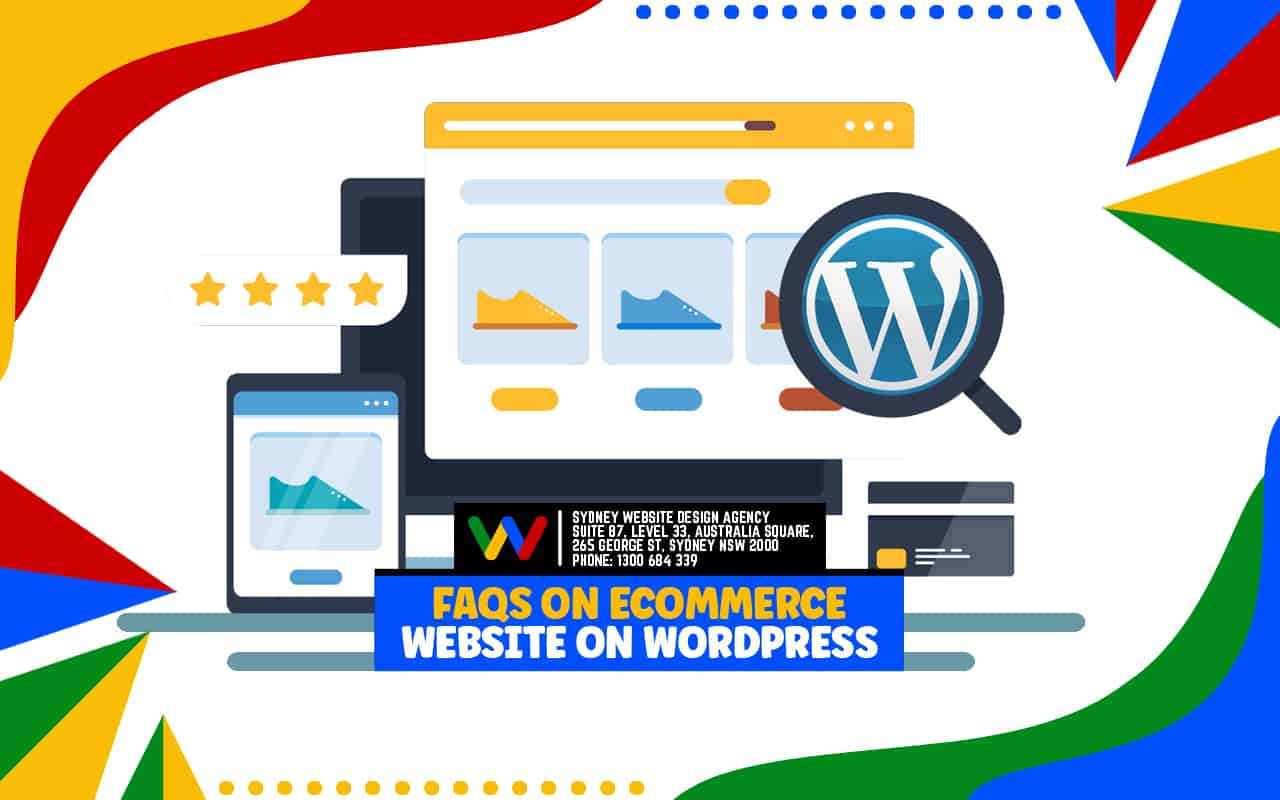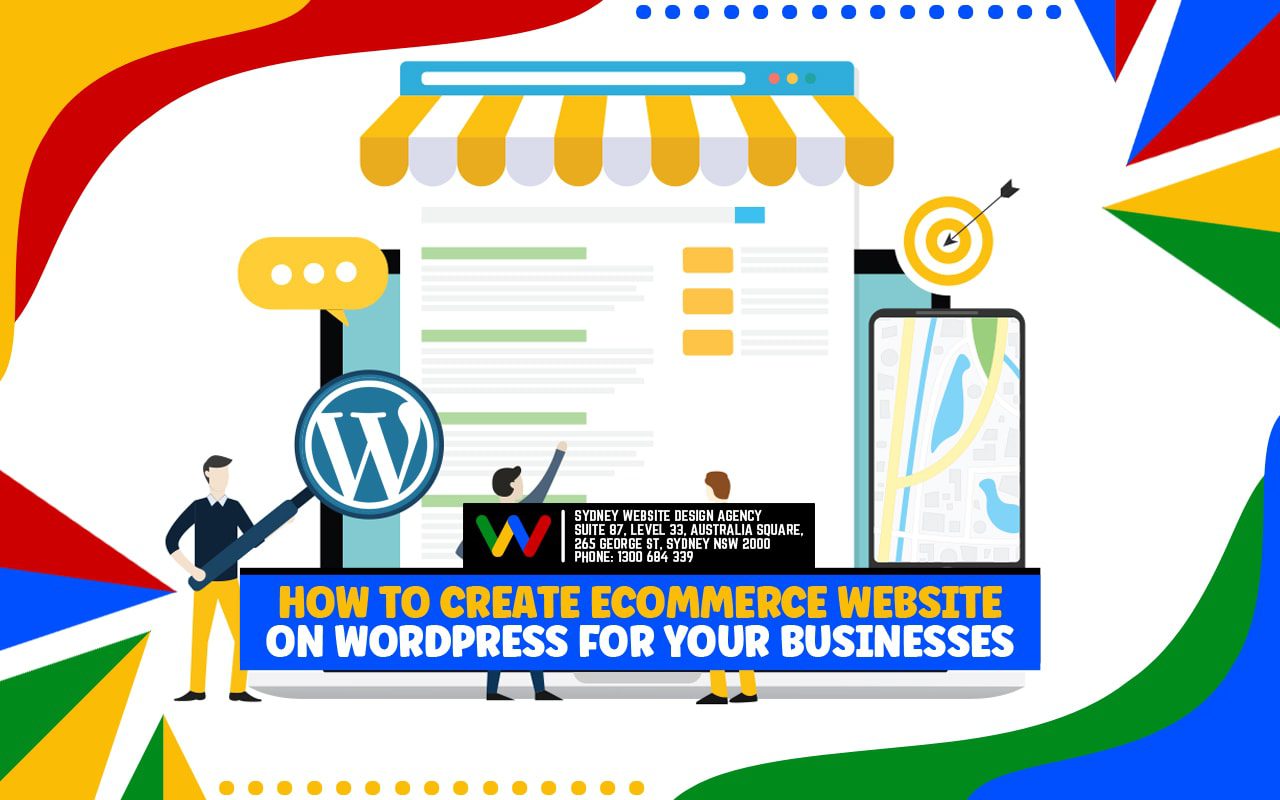Starting an eCommerce business is a popular way to expand your business, and WordPress is a great platform to build it on. In this article, we will show you how to create an ecommerce website on WordPress. We will cover everything from choosing a domain name to setting up payment processing, shipping and tax settings, and creating custom pages.
Introduction
Creating an eCommerce website on WordPress is an excellent option for your businesses, to reach as many customers as possible locally, nationally or even globally. With millions of products purchased online each day, it can be difficult to stand out and make your business profitable. But with the right tools and knowledge, you can create a beautiful and functional eCommerce website that will help you succeed in the online marketplace.
In this blog post, we’ll discuss how to create an eCommerce website on WordPress for your businesses. We’ll cover topics such as choosing a domain name, selecting a theme and hosting provider, setting up payment gateways, finding plugins to add features, gathering product information, understanding SEO strategies for better visibility, and optimising images for faster loading speeds. By the end of this guide, you should have enough knowledge to create a successful eCommerce website on WordPress for your small business.
Table of Contents
How to Create eCommerce Website on WordPress for Your Business
Starting an eCommerce business is a popular way to expand your business, and WordPress is a great platform to build it on. In this article, we will show you how to create an ecommerce website on WordPress. We will cover everything from choosing a domain name to setting up payment processing, shipping and tax settings, and creating custom pages.
Benefits of Having eCommerce Website

Before we dive into the details, let’s take a look at some benefits of having an ecommerce website. It can help you:
Reach a Larger audience
Selling on a brick and mortar store may be profitable up to a certain period of time. However, if you are looking to grow substantially as a business, you should create an eCommerce website on WordPress to be able to tap into a larger audience. Having an online store exposes you to a larger group of demographics. Additionally, an eCommerce Store helps you discover audiences you initially thought you did not have for your product or service.
Sell products and services around the clock
Your physical store closes at the end of the day, but your WordPress site doesn’t. This is one of the many advantages of having online stores on top of your physical stores for your products.
Increase Your Customer Base
Being visible online will help you reach more customers, which could be in different parts of the world. Customers can easily find and order your products or services on their time. A fully functional eCommerce store can easily accommodate eCommerce plugins that can help you optimise and promote your brand online – allowing you to increase your customer base.
Reduce Marketing Costs
As compared to traditional advertising and promotion techniques, using WordPress for ecommerce is much cheaper and cost-efficient eventually. You don’t have to worry about having a large budget for print ads or radio commercials, as you would do with traditional methods. With search engine optimisation, you can easily market your WordPress website at a lighter budget compared to traditional marketing.
Process Payments Securely
When you are dealing with monetary transactions online, security is an important factor. With WordPress, you can add various plugins to ensure that all your payments are secured and encrypted. A WordPress theme dashboard can make it easy for you to process payments securely without too many complicated plugins to worry about.
Ship Products Worldwide
WordPress makes it easy to ship your products to customers from all corners of the world. You can set up shipping fees, different packaging options, and even offer discounts for international shipments. Your eCommerce store can serve businesses as far as you want to deliver.
Automate Shipping and Order Tracking
You can also use WordPress to automate your shipping and order tracking processes. With plugins like WooCommerce, you can easily track orders and provide customers with updates on their orders. When you install WordPress on your web hosting service, it can be easier to add more plugins that can help you automate your shipping processes and track your orders, conveniently in your WordPress dashboard.
Collect Customer Data for Marketing Purposes
Using WordPress, you can also collect customer data to use for marketing purposes. This allows you to build relationships with customers and better target them with content that is tailored to their interests. A WordPress eCommerce store can give you insights on the buying patterns of your customers, allowing you to adjust your marketing strategies in favour of these choices.
Increase Customer Loyalty and Revenue
Finally, an ecommerce site can help you increase customer loyalty and boost your revenue. You can offer customers discounts and rewards for returning customers, which encourages them to keep coming back.
How to Choose the Right eCommerce Platform

You must select the right platform for your eCommerce website. Depending on the type of business you have, there are various platforms available such as Shopify, Bigcommerce, Volusion, and more. If you are looking to create a simple store with just a few products, then WordPress is an ideal solution. It’s free, easy to use and customise. Plus, it has some great plugins and themes that make creating your online store easier than ever before.
When selecting a platform for your WordPress eCommerce store, there are certain factors to consider, such as ease of use and customisation options. You want something that is user-friendly so that customers can navigate through your site easily. Additionally, if you plan on customising your store, you must make sure the platform offers the features and tools you need.
In addition to ease of use and customisation, it is also important to consider cost. Some eCommerce platforms have a monthly fee, while others have a one-time fee. Depending on what type of business you are running, you may opt for an eCommerce platform with a lower cost but more features or one that has higher costs but fewer features. It is essential to review all options before making your final decision.
Finally, ensure your platform integrates with other services such as payment processing and shipping systems. If these integrations are not available natively in the platform, there may be plugins available from third-party developers, and hosting plan that can be added easily.
By following these tips, you should be able to select the right eCommerce platform for your website. Once you have chosen a platform, you can begin customising and setting up your store. There are many tutorials available online that can help guide you through the process. With careful planning and research, you can create an effective WordPress website that meets the needs of your business and customers.
Setting Up a WordPress eCommerce Website

Setting up an eCommerce website can be a daunting task. But with the right planning and research, you can create a website that meets the needs of your business and customers. In this section, we will discuss some tips for selecting the right eCommerce platform and setting up your store.
Setting Up the Shopfront
Setting up the shopfront is the first step in creating an eCommerce website. You must select the right platform for your store and make sure it offers all the features you require. After selecting a platform, you should then decide on the design of your store, such as colours and layouts.
Additionally, you may wish to add plugins or other tools that can help enhance customer experience or provide additional functionality, which can be easily achieved with a WordPress hosting and WordPress software.
Finally, ensure that your platform integrates with payment processing and shipping systems, so customers can easily purchase items from your store. With careful planning and research, you can create an effective eCommerce website that meets the needs of your business and customers.
Adding Products and Categories
Once you have your store set up and designed, it is time to add products and categories. This process can be tedious, but it is necessary for customers to easily browse through your store. You should categorise all of your products according to type or category, such as clothing or books.
Additionally, you should include detailed product descriptions for each item so that customers understand exactly what they will receive when purchasing an item from your store. With informative categories and product descriptions in place, you will be able to help guide customers through the buying process more quickly and easily.
Configuring Payment Gateways
The last step in setting up an eCommerce website is setting up payment processors. Depending on the platform you are using, there may be several payment processors available to choose from. Before selecting a processor, it is important to research the features and fees associated with each one to make sure you select the best option for your store’s payment page.
Additionally, be sure that your chosen payment processor integrates seamlessly with other systems such as shipping and inventory tracking. This will help ensure customers can purchase items quickly and easily without any interruption during the checkout process, even while working with a third-party site for your checkout page. You need to provide secure payment processing for your customers.
Shipping and Tax Settings
In addition to payment processing, you must also set up shipping and tax settings for your eCommerce store. Depending on the eCommerce platform you are using, there may be several shipping options available. You should review each one and decide which is best suited for your business needs.
If you are selling physical items, you must set up taxes according to local laws. If not done correctly, this could result in delays or legal issues down the line. Once your shipping and taxes are set up properly, customers can easily purchase items from your store without worries about unexpected fees or long wait times on delivery.
Creating Custom Pages
In addition to the basics of setting up an eCommerce store, you may also want to create custom pages, such as a contact page or about us page. This can help customers learn more about your business and feel comfortable purchasing from your store.
These pages in your WordPress site can be used to showcase customer reviews and testimonials, which can help reassure first-time customers that they are making the right decision in selecting your store over another. With carefully crafted custom pages, you will be able to provide a better experience for your customers.
7 Tips for Marketing your eCommerce Website

Once you have created your eCommerce website, there are several steps you can take to market it. Here are seven tips to help get you started:
1. Utilise Social Media
Use social media platforms such as Twitter, Facebook, and Instagram to reach out to potential customers and build relationships with them
2. Create Content
Providing high-quality content on your blog or website can help draw in prospective customers
3. Leverage Influencers
Connecting with influencers who have an audience that is interested in what you offer can be a great way to promote your business
4. Participate in Forums and Communities
Participating in relevant forums and online communities will help increase your visibility as an expert in your industry
5. Host Contests and Giveaways
Offering discounts and free products on social media can help you increase engagement with potential customers
6. Set Up Email Campaigns
Setting up a series of email campaigns to promote sales, special offers, or updates can help keep existing customers informed and interested in your store
7. Advertise
Utilise online advertising such as Google Ads to reach out to new potential customers who may be interested in what you have to offer
FAQ of ecommerce Website on WordPress
What is the best way to start an eCommerce website on WordPress?
The best way to start an eCommerce website on WordPress is by selecting a platform that meets your needs, setting up payment processing and then purchase hosting and add WooCommerce plugin ideal for your eCommerce business needs. You can then start marketing your store with strategies such as social media campaigns and email newsletters.
Do I require coding knowledge to build an eCommerce website on WordPress?
What is the best way to market an eCommerce website on WordPress?
Do I need a specific theme for my eCommerce website on WordPress?
What is the best way to optimise my eCommerce website?

How to Create eCommerce Website on WordPress Conclusion

Now that you know how to market an eCommerce website on WordPress, it’s important to understand some of the best ways to optimise your store for success. Utilising tools such as Google Analytics can help you track customer data and gain insights into how people are interacting with your store. Installing WordPress is just the beginning of the many tasks ahead to create your best eCommerce website with WordPress.
Additionally, optimising all of your pages for SEO will help increase visibility and bring in more customers. You should also set up payment processing options and shipping and tax settings so that your customers can easily purchase items from your store. By following these tips, you will be able to create a successful and profitable eCommerce website on WordPress.




















































